- Features
- Solutions
- Pricing
- Resources
- Contact
- Book a demo

Are you ready to embark on a exciting journey of creating a vibrant coworking community? We're thrilled to share guidelines that will walk you through 20 essential steps to build an environment where diverse professionals can collaborate, learn, and thrive.
According to Zippia, in today's remote work landscape, 47% battle isolation, yet coworking communities flip the script. 83% of coworking members beat loneliness!
Let's dive into these steps and pave the way for a flourishing flexible space you and your members will love!
Why Build a Community in Your Coworking Space
Community building takes work, and you might wonder if it wouldn't be better to dedicate your time to something else. Even if the community is important, can't it develop independently without your supervision? Well, let's see.
1. People go to spaces for communities
Envision a space abuzz with collaboration, innovative coworking community ecosystem, and the warm hum of camaraderie. That's the coveted vision, isn't it? And our numbers wholeheartedly endorse this aspiration.
More than a third (35.7%) of potential members crave that community vibe. It's not just about sharing a workspace; it's about sharing experiences, insights, and a journey.
2. Community makes your space
A coworking hub minus an electrifying community membership is like a concert without music. Back then, these spaces were born for freelancers seeking shared experiences, collaborative savings, and a network of professionals. But if you strip away that dynamic community, your space is just a collection of rentable desks.
3. Rise above the competition
The coworking arena is hotter than fresh coffee. Now, without a community, what's your trump card? Why should folks pick you over their home setup, classy business centers, or other shared options? It's simple—a buzzing community sets you apart.
4. Opportunity, knocking loud
A coworking gem without a community is like a pizza without toppings—just not the same. Your members miss the joy of belonging. They won't cheer for your brand, spread the word, or aid its growth. It's a missed opportunity.
Community leaders: real examples
Let's sneak peek at some extraordinary spaces setting the community bar high. These real-life examples showcase how coworking spaces can become thriving hubs of collaboration.
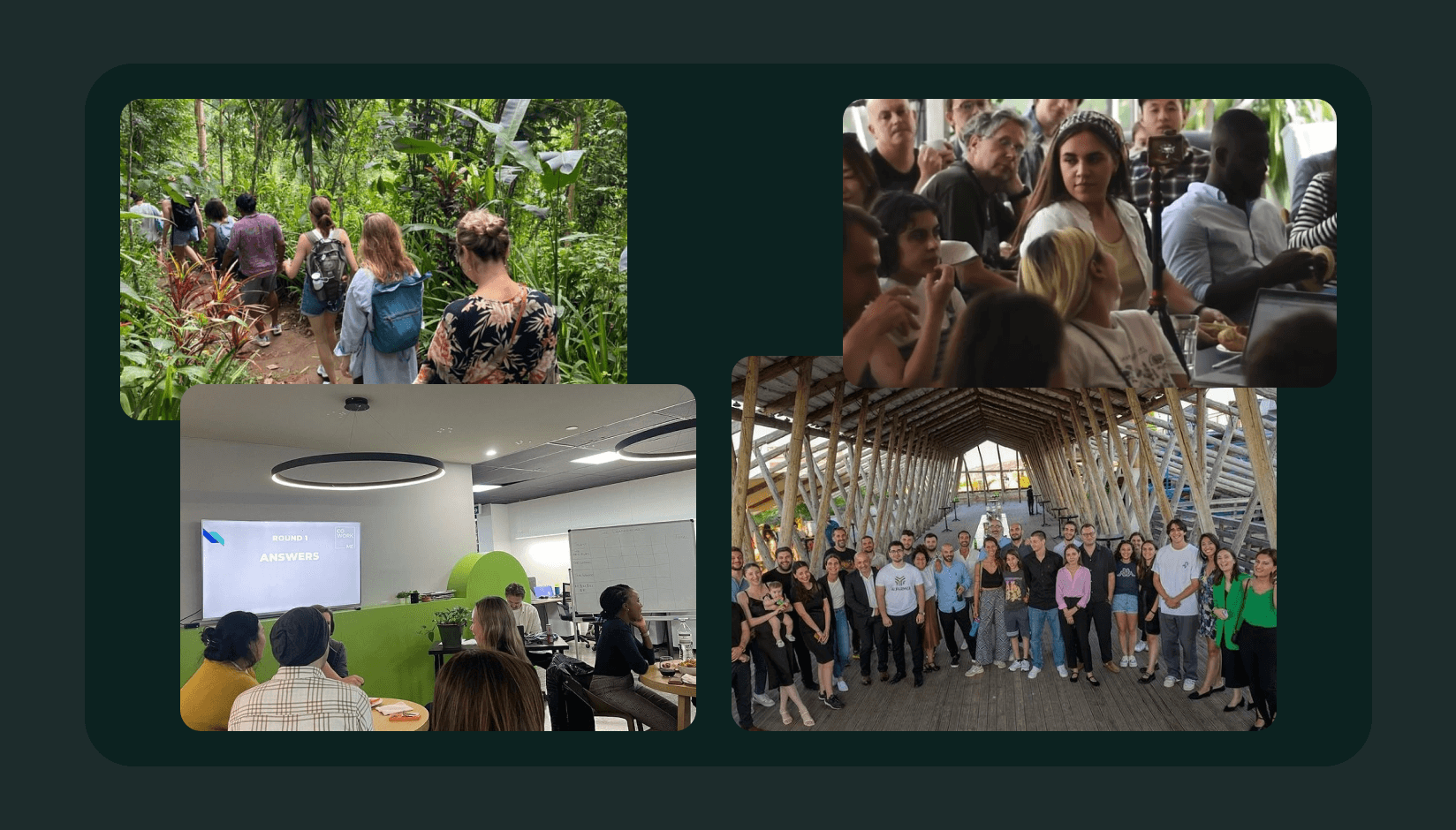
- Outpost (Canggu, Bali, Indonesia): Nestled near Bali's stunning beaches, Outpost combines coworking and coliving for a unique experience. Their focus on social activities, diverse coworking membership options, and vibrant environment make it a buzzing community hub.
- Betahaus (Barcelona, Spain): In Barcelona's lively Gràcia neighborhood, Betahaus shines with its zen-inspired design and regular events. The blend of cozy workspaces, networking terraces, and strong community vibes make it a standout spot.
- CoWork Me (Melbourne, Australia): CoWork Me in St Kilda offers a strong sense of community with its modern amenities, regular events, and convenient location. It's all about fostering connections and collaborations while providing a variety of workspaces.
- Impact Hub (Tbilisi, Georgia): The Tbilisi branch of the global Impact Hub network shines within the vibrant Fabrika complex. With flexible coworking memberships, a lively atmosphere, and access to their worldwide network, it's a shining example of community synergy.
How to Build a Community in Your Space?
Now you know what's on the line when you sideline the community. It's time to roll those sleeves within your space and beyond. Team up with local legends, supercharge connections, and watch your coworking voyage skyrocket.
Step 1: Introduce new members
Let's talk about strategies to make newcomers feel at home in our coworking community. People have different styles. Some are super outgoing, while others take a bit to open up. Let's set up a cool way to introduce new members.
- Welcome Packets: Design a curated welcome kit with essential information, a personal note, some branded merchandise, and perhaps a local guide or map.
- Introductory Coffee Sessions: Host bi-weekly or monthly 'New Members Coffee Hour', allowing newcomers to introduce themselves in a casual setting.
- Buddy System: Pair new members with seasoned members for a week. This mentor-mentee approach can help newbies navigate the space and its culture more easily.
- Digital Introductions: Use community feeds to introduce new members virtually. A brief bio or an introductory video can be shared with your online coworking community.
- Community Wall: Dedicate a space where new members' photos and short bios are showcased monthly, allowing others to recognize and connect with them.
- Orientation Tours: Offer guided tours of the facility, explaining the available resources and common practices and introducing them to some of the existing members.
- Themed Icebreakers: Organize fun and relaxed icebreaking sessions where members can get to know each other through games or group activities.
The coworking newsfeed can be a great tool. Throw in some fun icebreakers or interesting updates. It'll help the newbies connect.

Step 2: Organize events and attend them personally
Apart from just offering events, organizing and attending them personally can work wonders.
Think about it—hackathons, workshops, yoga sessions, Friday night music jams with free drinks—these magnets draw members together. You're not just a manager when you're hands-on in arranging these events. You're a desktop coworking community architect.
Getting involved means understanding the pulse of your space. You'll know what clicks, what excites, and what can be tweaked. It's your chance to be a part of the buzz, learn firsthand, and make your space the go-to hub.

Step 3: Share brand stories & encourage members to do the same
Every brand has a unique story; when you share it with your community, it's like inviting them into your world. It gets personal, you know?
If you think you have no story to tell, you are just not thinking out of the box. We made a list of ideas that hopefully will inspire you.
- Origin Stories: Discuss how your coworking space came into existence. Was there a unique problem you aimed to solve? Share it as a video documentary or a blog post.
- Member Spotlights: Regularly feature member interviews or success stories on your platform. Understand their journey and how your coworking space fits into their narrative.
- Host Storytelling Events: Organize monthly sessions where members can share their tales, be it business milestones, personal growth stories, or collaborative success stories within the space.
- Interactive Social Media Campaigns: Launch hashtags like #MyCoworkingJourney or #OurSpaceStories and encourage members to share their anecdotes, photos, or videos.
- Visual Narratives: Create a wall mural or dedicated corner in your space where members can pin photos, post-it notes, or short write-ups that depict their experiences.
- Collaborative Content: Encourage members to co-write blog posts, shoot podcasts, or create video series about life in a coworking space and the broader industry trends.
- Brand Chronicles: Share yearly milestones of your coworking space—celebrate growth, community events, or new features added.
- Engage in Local PR: Share your brand story and members' success stories with local media, emphasizing the role of the community in these achievements.
Step 4: Create stories with members, interview them, and post what they say
Ever thought about what happens when you interview members and share their insights? You get more than just stories—you get golden info about what they love and don't and how you can make things even better.
And guess what? When prospective clients see these stories, it's like a trust bomb. There's nothing more credible than real, inside scoop straight from members. It's like the ultimate review, backed by real experiences.
Step 5: Use influencer outreach tools to cooperate with nano and micro-influencers
Every brand has unique values and a rock-solid identity. That's what makes each of us stand out. And it's crucial when building a virtual coworking community around authority. Think about things you can offer to influencers and invest in building long-term relationships:
- Workspace Experiences: Offer influencers a month's free access to your coworking space in exchange for honest reviews or content about their experience.
- Host Influencer Events: Organize events or workshops these influencers lead at your space. It draws their audience in and showcases your facilities simultaneously.
- Content Collaborations: Work together to create blog posts, videos, or social media content that highlights the benefits of coworking, with your space as the focal point.
- Affiliate Programs: Create affiliate links for influencers, giving them a commission for every new member they introduce to your space.
- Feature Influencers: On your platform, be it a website or social media, showcase interviews or stories of these influencers. It can be their journey, success stories, or simply their experience at your coworking space.
Check out these influencer outreach tools. They help you find influencers, track conversations, and create impactful campaigns.
- Influence.co: A platform to find influencers, collaborate on campaigns, and measure results.
- Followerwonk: A Twitter-specific tool to find influencers based on their followers and activity.
- Awario: Helps monitor social media to identify potential influencers and track conversations.
- Mailshake: Not only for influencer outreach but also for personalized email campaigns.
- BuzzSumo: Helps identify influential content creators in your niche and track their performance (offers some free features).
Step 6: Refrain from pitching
Your flexible workspace is a complicated business model where you offer varied products. Sure enough, you want to grow your revenue and business, open new locations, sell more memberships, and provide additional services. However, you can't use community events for pitches because it will ruin everything.
Step 7: Make your products easy to discover and apply
Think of nice and simple mobile apps for members. They're like a gateway to all the good stuff. Remote meeting room booking, shop, benefits catalog, and a community feed—all in one spot. It's like giving everyone their own personal concierge.
The cool thing? When you make things easy to access, it's not about diving deeper into pockets. It's all about improved comfort.
So, let's keep it seamless, user-friendly and let the community enjoy the ride.
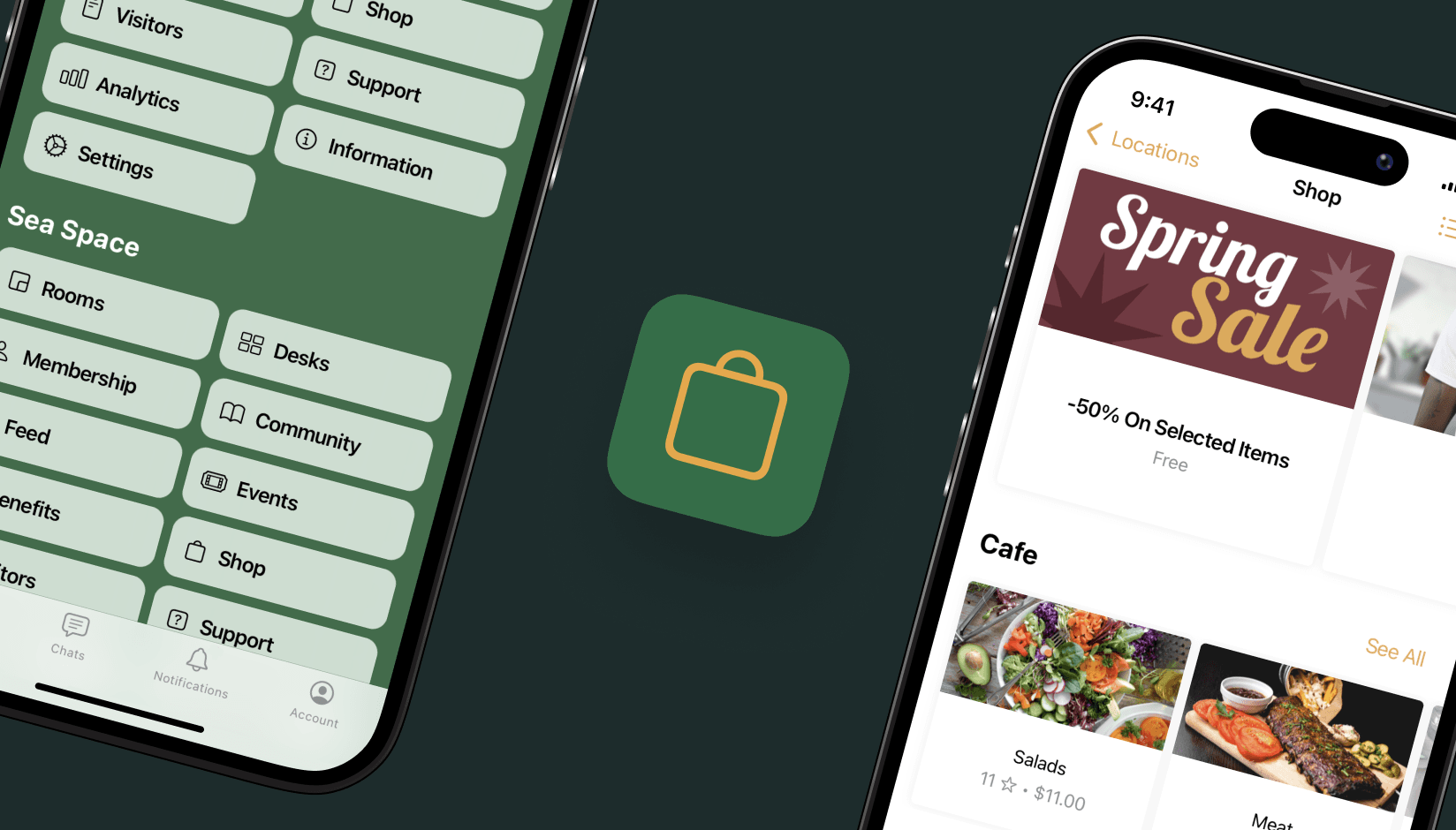
Step 8: Connect people
You've got a treasure trove of member data stored in your coworking software community directory. You're like the guide, walking alongside them in their customer journey. And guess what? You're perfectly positioned to spark some magic partnerships.
Imagine this: during an event, a coffee break, or lunch, you spot potential matches for collaboration. You've got that proactive spirit to introduce them, and it's not just about shaking hands. It's about saying, "Hey, you two could rock this together."
So, let's be those connectors, those matchmakers. It's all about creating opportunities and watching collaborations flourish.
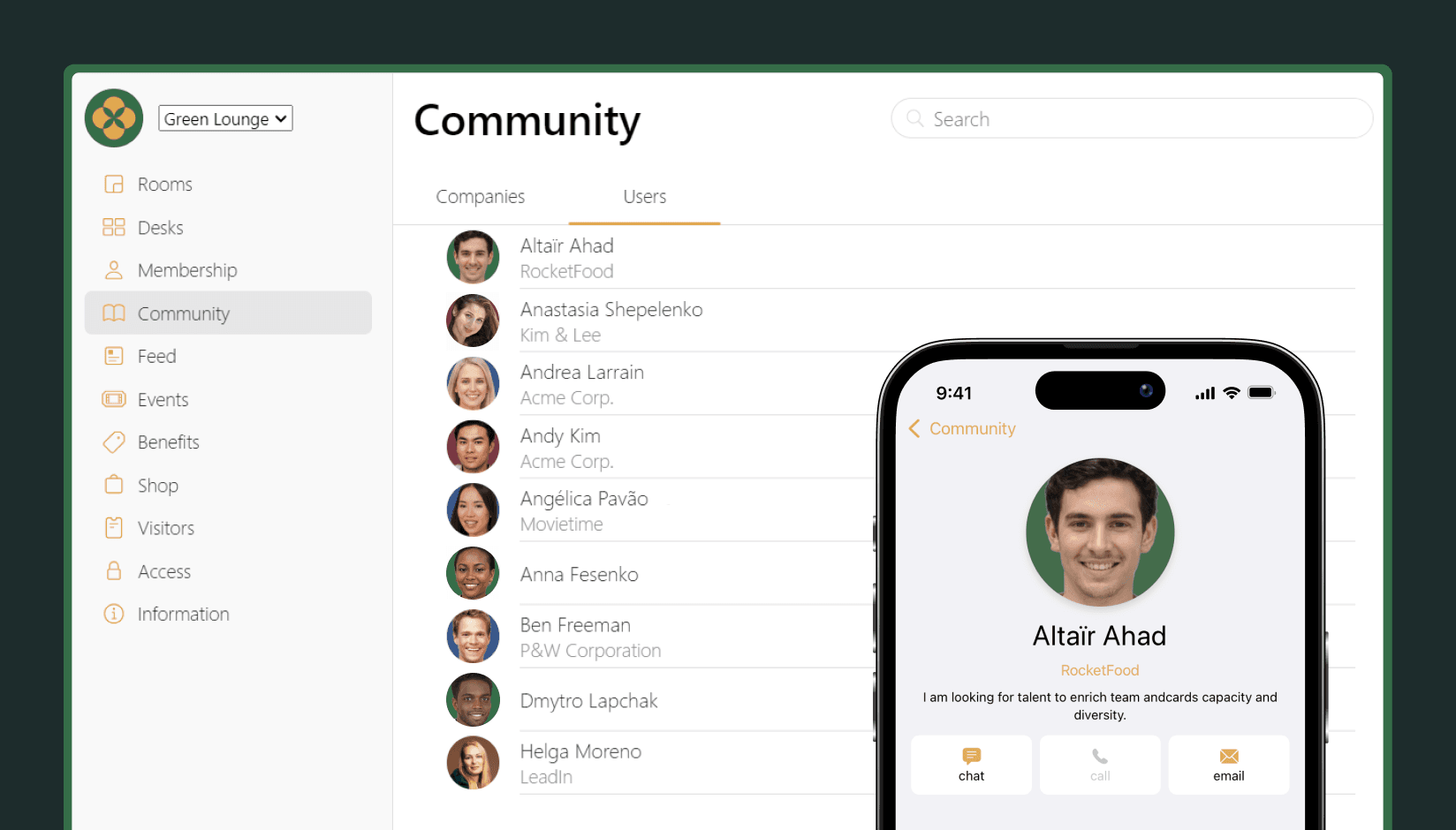
Step 9: Build trust
Trust is a basic component of a coworking space community. Show members that you care about their issues by implementing contemporary customers support technology in your space. To help clients feel heard, start with simple but very effective measures.
- Direct Messaging Platforms: Use platforms like Spacebring where members can directly message community managers or support staff for immediate assistance.
- Feedback Loop: Implement a system where members are asked for feedback on the resolution process after a support ticket is resolved. This helps in continuous improvement.
- Issue Tracking Dashboard: Have a dashboard showing ongoing support requests' status. This keeps you in the loop of new requests.
- Knowledge Base: Develop an online knowledge base or FAQ section that members can refer to. This can preemptively answer common queries without members having to raise a ticket.
- Proactive Support: Use analytics from your coworking software to predict potential issues (like a double-booked meeting room) and address them before they become problems.
- Regular Check-ins: Have community managers or support staff do regular check-ins with members, asking if they have any issues or concerns. This proactive approach can make members feel valued.
These processes can be easily set up with a coworking system that allows automating support tickets and sending direct messages to users. You can check new requests, contact users directly, and keep track of previous issues.

Step 10: Respond quickly and offer practical solutions
Make things easy for your customers. Imagine members booking meeting rooms, applying for benefits, and handling payments—all at their fingertips.
When you offer self-service options, it's more than just convenience. You give customers easy-to-use instruments that would promote more purchases and increase your revenue. Also, you save your time and focus on other tasks.
So, let's keep the solutions flowing and watch our community grow stronger.
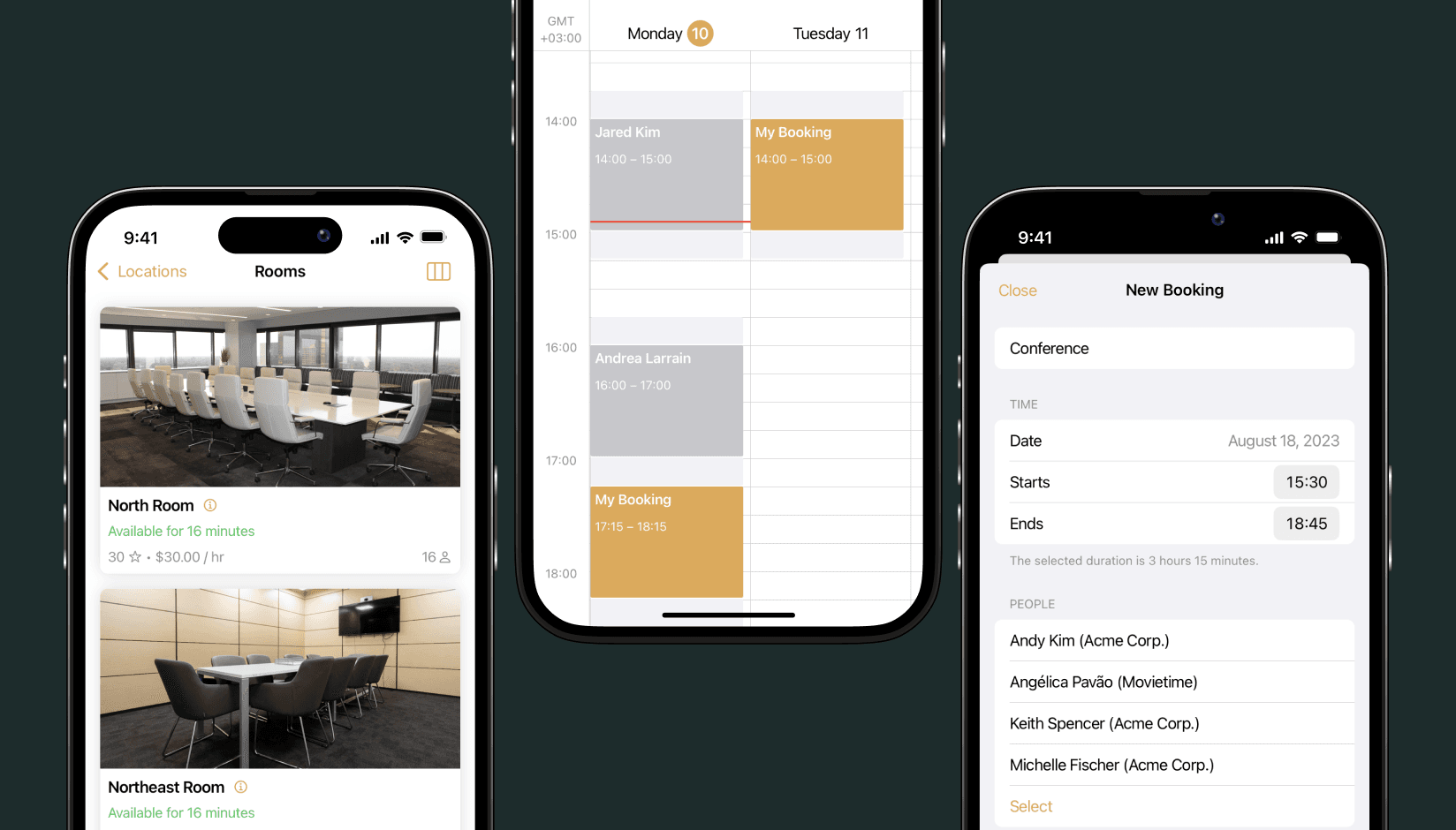
Step 11: Stay connected with members all the time
Enable news updates on your corporate platform and chats that involve them, and ask for their opinions. Oh, and don't forget to give clients ways to interact - even with likes and shares. If you are wondering where to start, try implementing these tips.
- Weekly Newsletters: Deliver updates about the latest happenings in your workspace or industry through emails. Make it interactive by adding polls or feedback sections.
- Interactive Webinars: Organize regular webinars on topics of interest. Invite questions, run live polls, and encourage active participation.
- Dedicated Chat Rooms: Create topic-specific chat rooms or forums on your corporate platform. This allows members to discuss, brainstorm, and share insights on subjects that interest them.
- Feedback Surveys: After events or significant changes, send out surveys. This provides you with feedback and makes members feel their opinions are valued.
- Social Media Engagement: Post regularly on LinkedIn, Twitter, or Facebook platforms. Encourage comments, likes, and shares. Engage in trending topics and initiate conversations.
- Q&A Sessions: Host monthly or quarterly Q&A sessions where members can ask questions, voice concerns, or provide suggestions.
- Community Boards: Set up physical and virtual coworking community boards where members can post updates, seek collaborators for projects, or share personal achievements.
- Client Interaction Spaces: Provide spaces on your platform where clients can interact directly with members, fostering a sense of community beyond internal team members. Or you can opt to use a third-party customer relationship management platform to help facilitate communication between your clients and members.
- Celebration Posts: Acknowledge milestones, birthdays, or member achievements on your corporate platform or social media. Encourage others to join in the congratulations.
When you're engaged like this, it's more than just updates. It's like saying, "Hey, you're part of this conversation, this community."

Step 12: Arrange networking spots
Communities grow on their own if they have the right environment—so flexible workspace design is a great instrument for encouraging networking. So, create drill—comfy spots where coworkers can chill and chat. And let's be honest, some of the juiciest conversations happen near those coffee spots, right?
Discover how hundreds of spaces worldwide unlock success and grow better with Spacebring
Step 13: Balancing the needs and expectations of different members
You've got a diverse crew with different needs and expectations. As a coworking manager, you aim to ensure everyone's happiness and thriving.
So, how do you nail it? By creating an environment that accommodates various work styles. Some might need quiet nooks for focused tasks, while others crave open spaces for collaboration. Here’s a couple of ideas.
- Flexible Spaces: as work styles differ, so do spatial needs. Some members might require:
- Skill-Sharing Workshops: Allow members to teach and learn from each other.
- Feedback Sessions: Regularly gather feedback to ensure you're meeting members' needs and addressing any concerns.
- Amenities: Kitchen and Refreshments: A well-stocked kitchen with tea, coffee, and perhaps some snacks can enhance the member experience.
- Recreational Areas: Spaces with comfortable seating, games, or relaxation areas can provide much-needed breaks.
- Ergonomics and Comfort: Desks and chairs that cater to various body types and preferences ensure comfort during long working hours.
- Natural Lighting: Windows or skylights can boost community mood and productivity.
- Climate Control: An easily adjustable heating or cooling system to cater to all members and reduce conflicts.
- Accessibility: Use signs to help new members navigate the space, especially for newer members.
Step 14: Implementing policies that foster respect and cooperation
Policies allow you to create a respectful and productive working environment. Setting the tone for respect and cooperation is like creating this awesome atmosphere where everyone feels good.
These policies should be easy to find. Placing them in your coworking software's information and guides section is the way to go. Make them available offline and online, and encourage users to pay attention. This way, they're accessible and crystal clear. It's like saying, "Hey, let's all be on the same page."

Step 15: Handling conflicts and challenges within the community
Obviously, when you gather people in a single space, misunderstandings happen. How you handle them defines your community's strength.
You need to embrace the role of the mediator. Figure out policies for resolving conflicts, hear all sides, and take responsibility for the final decision.
Step 16: Giving members tools for communication
WhatsApp, Telegram, and other social media are cool, but dedicated channels create a special connection to your space. Think chats and feeds right inside the app members use for bookings. The community will be stronger if members can talk to each other not just when they are in the same room but outside of the space as well.

Step 17: Partnering with other organizations or communities
Partnerships with other businesses can make your community coworking space even better. When you team up with others, you can offer more services and attract more members. Think about nearby cafes, tech stores, or gyms. Working together can help both sides grow and reach new customers. Here’s a couple of ideas to get you started.
- Local Cafes and Restaurants: Offer discounts to members for meals or coffee breaks, encouraging them to step out and refresh. This can foster networking and informal chats outside the coworking environment.
- Office Supply Stores: Provide special deals or bulk discounts on essential supplies. This can reduce costs for members and ensure they have everything they need.
- Tech Stores and Repair Services: Offer discounts or priority servicing for members. This ensures minimal downtime for professionals when their equipment malfunctions.
- Local Gyms or Fitness Centers: Offer discounted memberships or classes, promoting wellness and work-life balance among members.
- Event Spaces and Organizers: Partner for hosting community events or workshops. These events can help members network and learn.
- Professional Development and Training Centers: Offer discounted courses or workshops to upskill members, adding value to their membership.
Step 18: Offering unique perks
Offering special perks isn't just about giving treats; it's about making your coworking community stand out. Think of exclusive deals, workshops, or even partnerships with nearby businesses.
And here's the secret sauce—these perks should be easy to grab. The best way? Have a catalog right inside members' apps. This way, they can explore and apply for the ones that catch their eye. Here’s what you can offer.
- Skill-building Workshops: Organize monthly sessions focusing on trending topics, be it digital marketing, design thinking, or public speaking. These will not only enrich your members professionally but will also cultivate a culture of continuous learning.
- Recreational Zones: Dedicate spaces for relaxation, perhaps a lounge with board games, a reading corner, or a meditation zone. This can help members de-stress, recharge, and interact informally.
- Exclusive Member Events: Host in-house networking events or themed social evenings. This fosters community engagement, allowing members to connect professionally and personally.
- Digital Resource Library: Develop an online repository of e-books, industry reports, and online courses accessible exclusively for members, ensuring they're always equipped with the latest knowledge.
- Flexible Work Hours: Instead of the standard 9-to-5, offer extended or 24/7 access. This accommodates various work schedules, especially beneficial for those with international clients or unconventional working hours.
- Wellness Initiatives: Organize weekly fitness classes, mindfulness sessions, or health check-ups. By emphasizing wellness, you demonstrate care for members' holistic well-being.
- Personalized Workspace Options: Allow members to customize their workspace to some extent, be it with plants, ergonomic furniture, or choice of lighting. This personal touch can significantly enhance their comfort and productivity.
By embedding these perks into your offerings, you're not just providing a workspace but an environment that nurtures growth, fosters community, and prioritizes well-being. It's these nuances that make your community coworking space a sought-after destination.
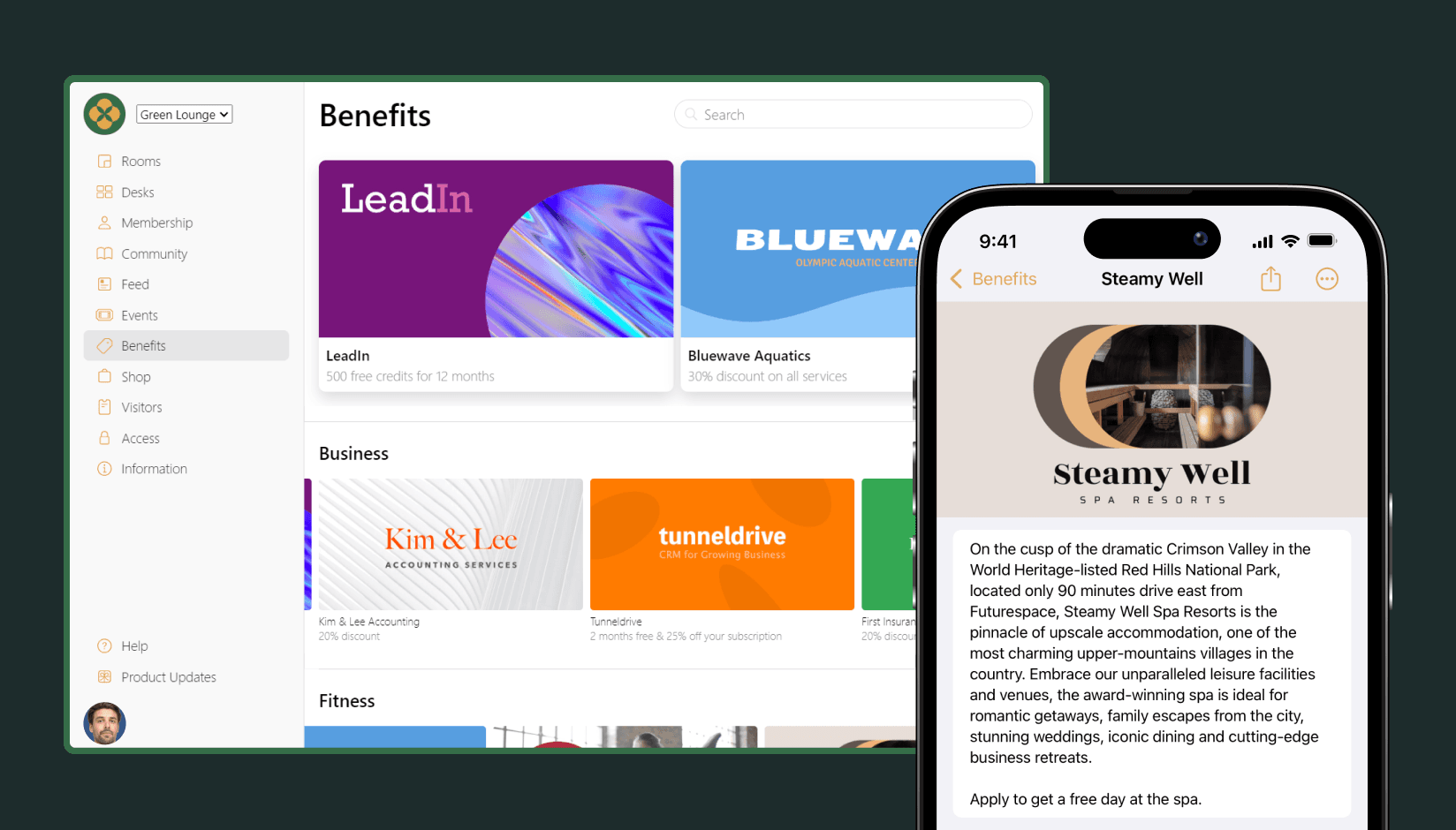
Step 19: Make sure there are enough coolers, coffee machines, and kettles
Coolers, coffee machines, and kettles placed near the seating areas are like little oases. Add quality coffee and tea, maybe some milk and cookies—and boom! You've got the perfect recipe for cozy moments.
Why? Because a good cuppa brings people together. When coworkers enjoy that excellent brew, it's like adding an extra dash of community spirit. They'll linger, chat, and soak in the vibes of their peers.
So, let's create comfort, boost those connections, and make every sip count.
Step 20: Encourage customers to leave reviews and recommend the space
Encouraging customers to leave reviews and recommend the space isn't just about boosting your rep; it's about sharing the love. When members share their positive experiences, it's like inviting others to join your fantastic coworking community.
Strategies to Encourage Feedback and Advocacy:
- Incentive Programs: Introduce a referral program where members can avail of discounts or perks for bringing in new members through their recommendations.
- Feedback Stations: Set up dedicated corners within the space where members can easily drop their reviews or testimonials.
- Digital Reminders: Send periodic emails or app notifications inviting members to share their experiences online, possibly on platforms like Google Reviews or Yelp.
- Member Spotlights: Feature member testimonials on your coworking platform or social media, showcasing real stories and experiences.
- Recognition for Advocates: Celebrate and acknowledge members who actively promote and recommend the space, even by something like appointing a 'Member of the Month'.
Think of it as a ripple effect. Their words have the power to create a wave of curiosity and interest. It's like saying, "Hey, we're having a blast here, and you're invited too!"
Conclusion
And there you have it—20 steps to kickstart, nurture, and rock your coworking community!
From fostering connections to brewing camaraderie, we've covered it all. Now, here's the scoop—a great chunk of these steps becomes a breeze with the right coworking space software in your corner.
Imagine streamlined communication, seamless event planning, and hassle-free perks catalog right at your fingertips. It's like having a community-building ally right there with you.
Curious to see it in action? Go ahead, and schedule a demo call with our product expert. Let's take your community to the next level together.




